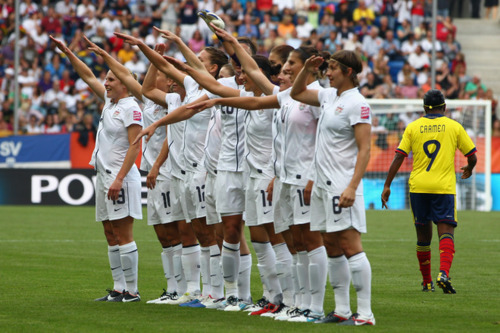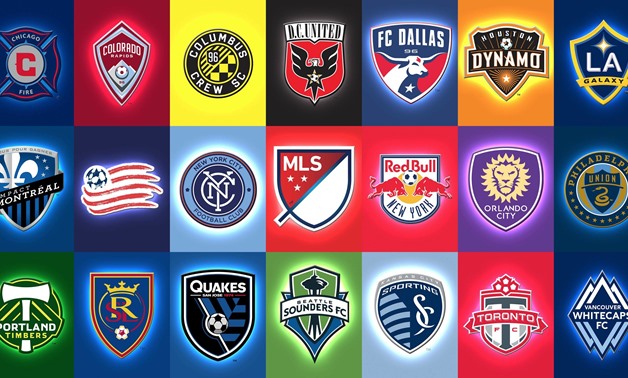The Dominant Force in The Women’s World Cup? Subjectivity.
The Dominant Force in The Women’s World Cup? Subjectivity.


By Eric Beard, writing from Boston
Every tournament in football contains, at least to a certain degree, a sense of discovery. Commentators enlighten us with facts and subtle connections that the average fan does not have on their radar. However, the difference between the World Cup and the Women’s World Cup seems to be the amount of knowledge about the players, the tactics, and the teams the average viewer holds. In the World Cup, Copa América, and the EUROs there are experts that can tell you everything about every participating nation, in the Women’s World Cup you get the feeling that there may only be a handful of people in the entire world that can provide a similar level of depth. This is a profound problem for the women’s game as a whole and provides a complex situation for the media outlets, such as ESPN, trying to do justice to the beauty and quality of the female footy.
So far, sweeping generalizations have been used to fill the gaps in coverage surrounding the tournament. The Brazilians, led by Marta, use their attacking flair and trickery to break down defenders. The Germans are disciplined and organized. Louisa Necib is a skillful French midfielder that viciously builds attack, therefore we can call her ‘the female Zidane’. Commentators like Ian Darke and Julie Foudy have done an admirable job trying to balance intelligent, tactical commentary with enough vague insight for the vast majority of their audience. They have been teachers of the women’s game, but only to an extent. They truly know Germany. They know the United States. France. England. Canada. Sweden. Brazil. Australia. Mexico. Japan They know majority of the nations competing. But Nigeria, New Zealand, Equatorial Guinea, Norway, North Korea, and Colombia? Those nations, those stories are not being told sufficiently.
A classic example of such vague, fruitless insight was Ian Darke explaining that the Colombian women chose to wear their first names on their jersey, with Julie Foudy responding, “I thought you were just calling them by their wrong names this whole time.” This comment may have been in jest, but they missed an opportunity to teach their audience about how this decision reflected the sacrifices these Colombian women had made. The Colombians were combating the rampant male-dominated attitude toward the game in their homeland. They were courageously standing up for women fighting to play the game they love, facing the disapproving judgments of their male counterparts, not to mention their communities.

If I’m honest, my understanding of women’s football is nowhere near my knowledge of the men’s game. However, after watching a few matches and interacting with fellow fans, I realize that my knowledge of more or less 50 individuals in the Women’s World Cup and WPS and the history of past competitions still exceeds 95% of other viewers. When the coverage is so raw, so lacking in detail, this is hardly surprising.
We are all learning to love individuals and pick a team to support, or pick our second team. The USA’s Megan Rapinoe and Heather O'Reilly are warriors with personalities to match their audacious efforts on the pitch. Christine Sinclair’s decision to play a match and a half for Canada with a broken nose was one of true grit. Germany’s aging star Birgit Prinz is having her WWC swansong after an astounding career.
The problem?
Everyone paying attention to the tournament has an opinion, and most have a rationale that is just as raw as the coverage. Whereas common sense and consensus tend to eventually come into existence in major sporting events, the Women’s World Cup distinctly lacks an appropriate, established voice of reason. Some US-based writers deemed the USA’s 3-0 victory over Colombia as once of the most complete performances they’ve seen by a team representing the stars and stripes. Ever. Others criticized the US for not closing down when they lost the ball and gave possession away far too easily and claimed that playing like that against a great team like Germany would be costly. Between praise and criticism, there’s barely any middle ground.
In fact, there was only one truly comprehensive preview for the Women’s World Cup, and it was independently put together by bloggers Jenna Pel and Jeff Kassouf. Not by Sports Illustrated. Not by The Guardian. By two dedicated bloggers. So it is possible for those yearning to learn about the women’s game to find information about it. The women’s game has shown its beauty, with amazing goals, hard tackling, and wonderful passing combinations, but getting past the sea of subjectivity and actually gaining any familiarity or connection with all the teams? That’s the next step forward.







